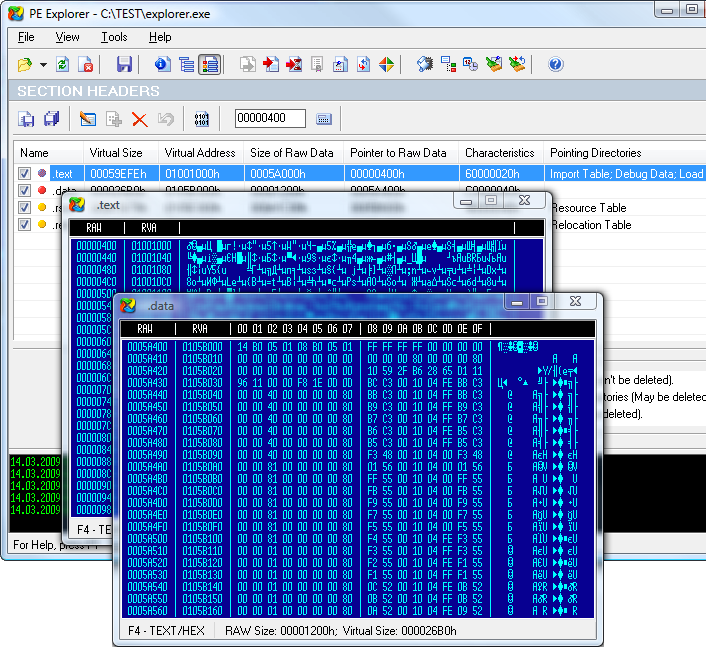

- #View images in a dll file full size
- #View images in a dll file portable
The source file path of the file we'll use for generating the preview image (Thumbnail). When the file is clicked at the Plastic SCM items view, Plastic will execute our preview tool twice. This can be configured inside the Plastic SCM Preferences > Preview Tools > Add panel. #View images in a dll file full size
We'll create a single tool to handle the three requirements but I just want to let you know you can create one for the thumbnail and the full size images creation and another tool for the properties generation.
Create a properties summary of the file. As you may know from our previous blogposts ( Custom binary preview and Binaries preview for game developers) a preview tool is in charge of providing three different things: We will not only generate interesting data based on the "DLL" files but also a nice thumbnail image. Now that you have your new icons, you might want to use it to create a custom icon for your flash drive.The custom preview tool we are going to build will provide information to the Plastic SCM items and diff views. There are some other programs that work, but they only let you extract 16×16 or 32×32 sizes, which is useless in my opinion. These are pretty much the two best programs getting good quality icons out of an application file. Lastly, you can select an icon and then press the Favorites button, which will add it to the Favorites tab where you can easily access them without having to search again. You can also click on a particular file from the search results and it’ll show you just those icons from that file. If you don’t click on anything on the left side, it’ll show you all the icons for that particular size that it found. Max is set to 10,000 and that really should be large enough. The min number of symbols means the lowest number of icons that have to be in a file for it to show in the search results. Now if you wanted to scan for all the icons in a particular directory, you click on the Search tab and then click on the New Search button.Ĭhoose a directory and then choose whether to recursively search all subdirectories or not. So that’s how you can extract icons from a particular file. If you want to save it as an image file, just click on the Save as type box and change it to BMP or PNG and then choose of the formats. You’ll get a customized save dialog where you can save it out as an icon with all the different sizes and color depths. To save the icon, click on it and then click the Save button or just double-click on the icon. Let’s say I wanted to get a nice icon for Google Chrome, I would just browse to the chrome.exe file.Īs you can see, the preview window lists out all the different sizes for the icon stored in that executable. Under the Directory tab, you can browse to an individual file and see the icons for that particular DLL or EXE, etc. Just run the EXE file and you’ll get the main program window with three tabs on the left and a preview window on the right. #View images in a dll file portable
I don’t think IconsExtract has been updated since 2010, so that’s quite a while back.Īnyway, this program is also portable and doesn’t require an installation. I like this program slightly better than IconsExtract because it has a nicer interface and cleaner look. Not sure what’s up with the funny name, but BeCylconGrabber is a useful little tool for grabbing high quality icons from application executables. If you want to copy a different size, double click on the icon and select the specific image in the properties window and click Copy Selected Image.

This will copy the icon in the standard dimensions of 16×16 or 32×32. You can also copy a single icon to the clipboard and paste it into another application by pressing the standard CTRL + C key combo. You can then save the icons into ICO files by selecting the ones you want to save and then choosing Save Selected Icons from the File menu.

Scan Icons in Selected Processes – This is a nice option that simply lists out the currently running processes on your computer and lets you choose one of them to extract icons from.Īfter the search is complete, you will find the icons displayed in the main window of the program. For example, if you click browse folders, select C:\Program Files (x86)\ and then check the subfolders box, you’ll be able to search all files of all installed programs for icons! If you check the Search Subfolders checkbox, all of the subfolders of the main folder will also be scanned. In addition to just files, you can scan a folder by clicking the Browse Folders button. You can also select multiple filenames by using wildcard characters (? and *). You can either manually type in the filename into the textbox, or select it from a dialog box by clicking the Browse Files button. Scan Icons in Files – For example: C:\Windows\system32\shell32.dll – This is the default value when you load the program.







 0 kommentar(er)
0 kommentar(er)
